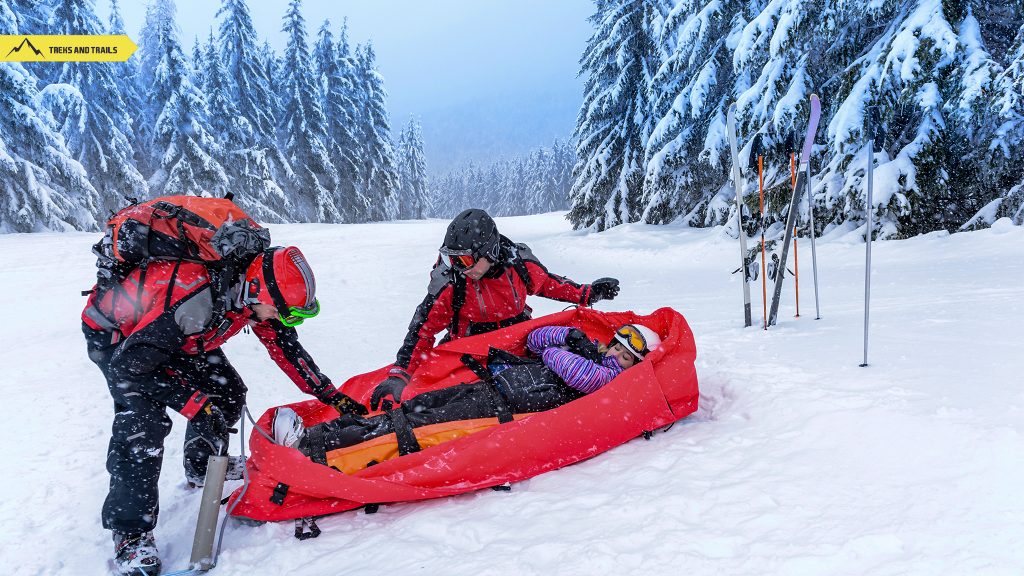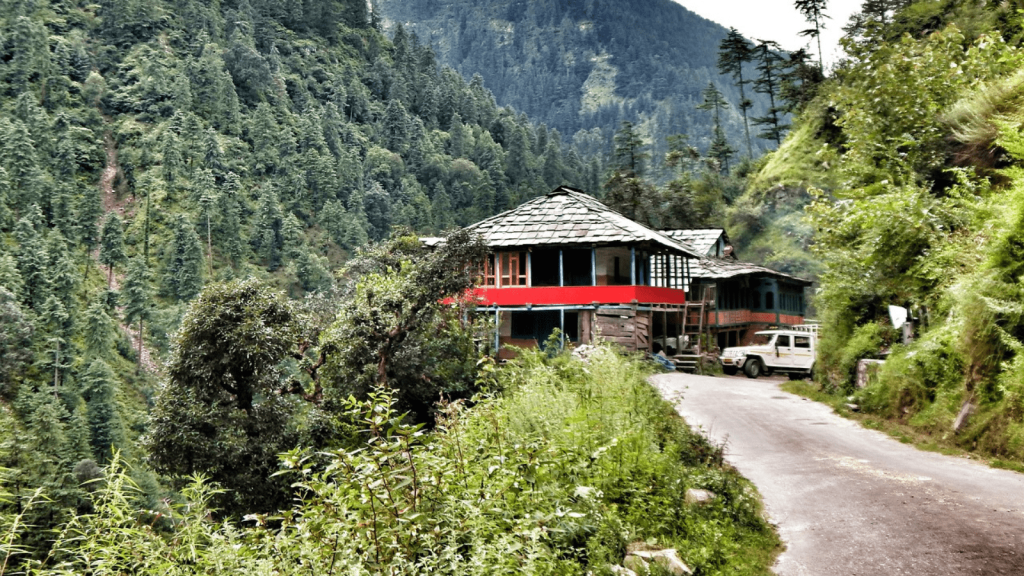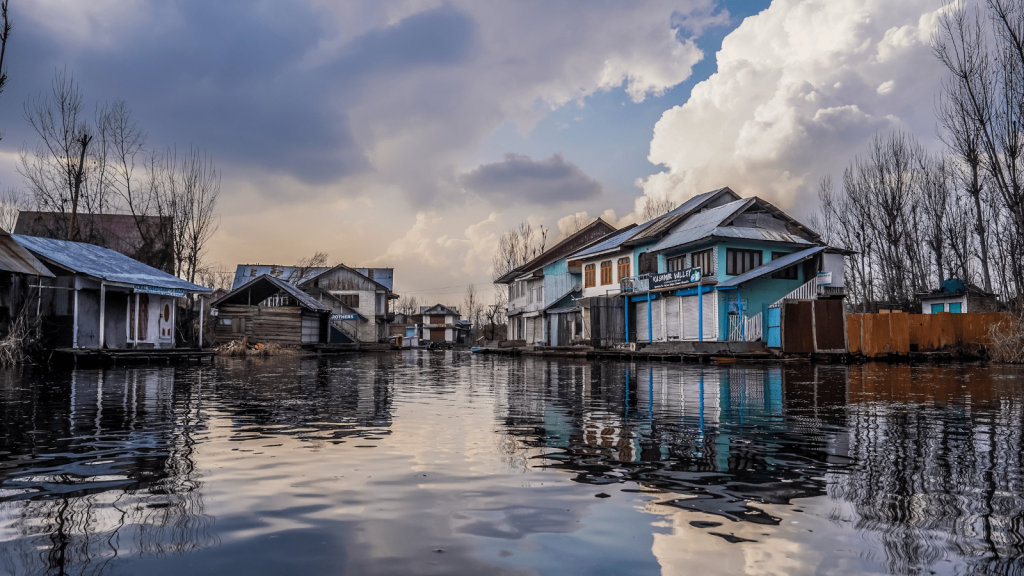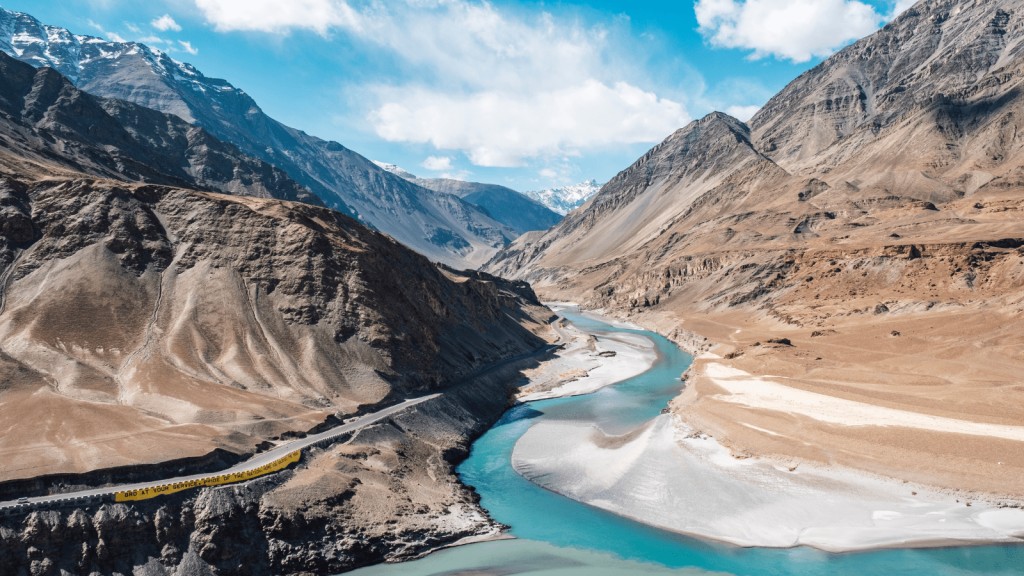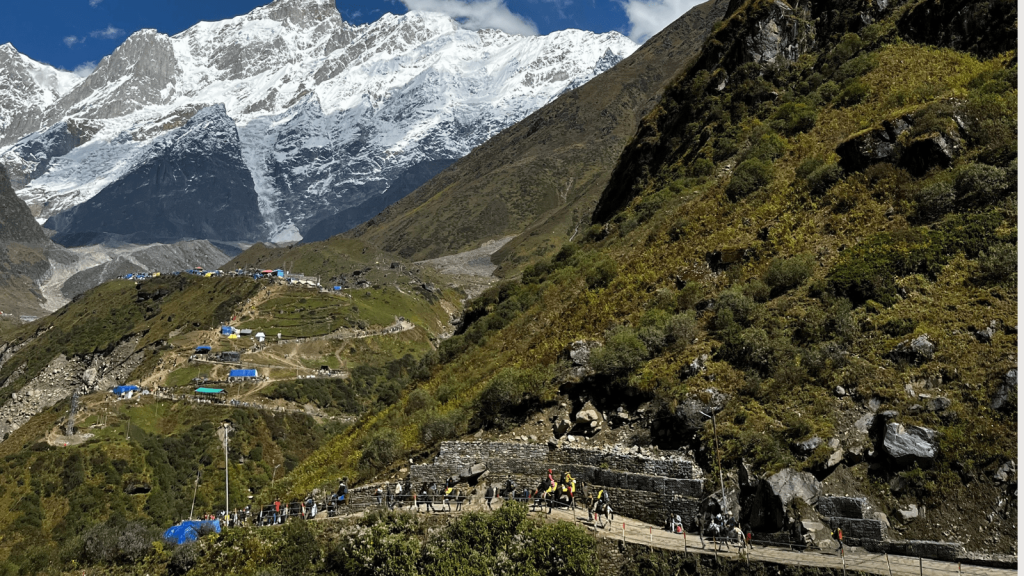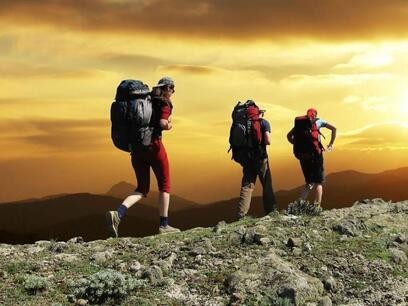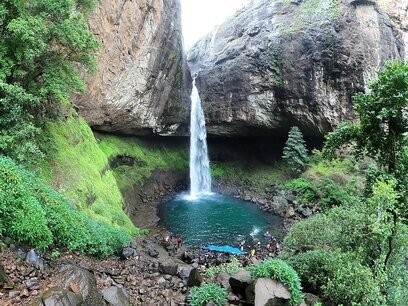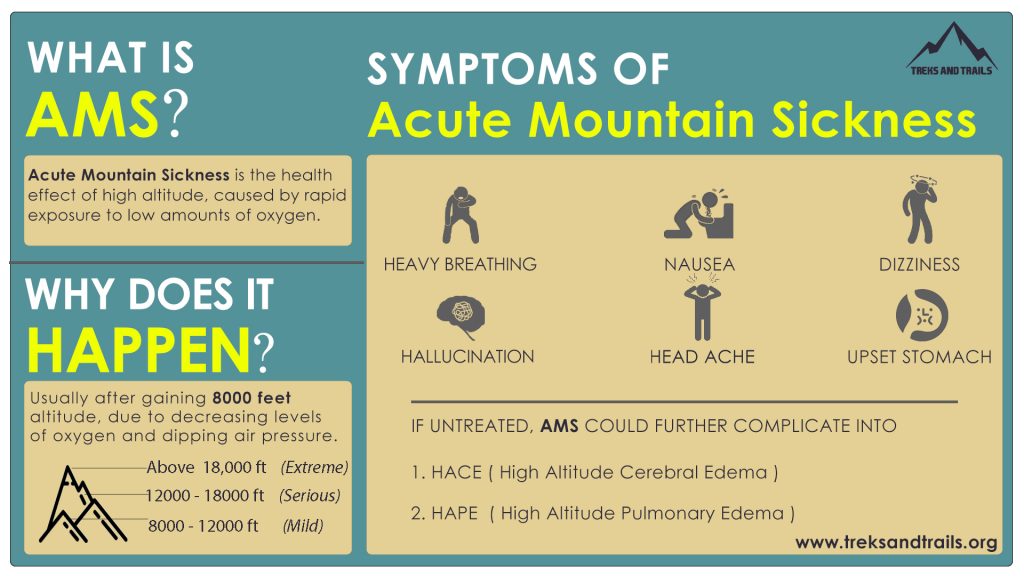
What is Acute Mountain Sickness, HAPE & HACE?
Acute mountain sickness happens at high altitudes, which is very common if you are trekking in the Himalayas. From my experience, I will talk about the most common forms of altitude sickness which we see on high altitude treks known as AMS or Acute Mountain Sickness, HAPE, and HACE.
Acute Mountain Sickness - AMS
Acute mountain sickness named as high altitude mountain sickness. High altitude sickness can hit any person who is trekking in the Himalayas or above 8000 feet. It may hit you at any point, and then your body starts showing symptoms. Mention below are the signs of AMS you may experience on your trek.
- Heavy Breathing
- Nausea
- Dizziness
- Severe Headache
- Chest Compression
- Aggression
Most trekkers get affected by gastrointestinal symptoms in AMS. They either go to the loo very often, or they feel uneasy. Especially they suffer from diarrhea, or they vomit especially late in the evening. These are all classic symptoms of AMS. Few people walk appropriately on the first day, and the second day they tend to stroll, and on the third day, they have health issues. Watch especially those people who show a lack of appetite to eat. If left untreated and ignored, AMS could transform into HAPE & HACE, which can be critical.
HAPE - High Altitude Pulmonary Edema
HAPE is more an advance form of AMS and a more dangerous form.
Pulmonary means related to lungs and Edema means the accumulation of fluid in parts of the body. Trekker suffering from HAPE needs urgent attention. Fluid from his blood leaks into air sacs and lungs due to high altitude pressure in the lungs. HAPE is like death if one is hit by HAPE lungs start drowning in his body fluids. The symptoms of HAPE are as follows.
- Fatigue
- Loss of appetite
- Heavy Breathing
- Sound of congestion in the chest
- Dry Cough
HAPE can be treated by identifying symptoms as early as possible and acting quickly.
HACE - High Altitude Cerebral Edema
When a person is affected by HACE, his brain starts to swell. Cerebral means Related to brain and Edema accumulation of fluid in parts of the body. HACE happens because blood vessels in the brain dilate, and fluid gets collected in the brain. A headache is a common symptom which has HACE, a headache that won't go with any medication. There are few symptoms to identify HACE are as follows.
- Generally, talk excitedly or show irritation
- Walk woozy
- Struggling to talk
- Hallucinate
- Unable to see clearly
- Ataxia (Brain tells the body something, but the body does something)
These are typical symptoms of HACE. A trekker who's affected by HACE could go into a coma within hours. So it's essential to act before it gets severe.
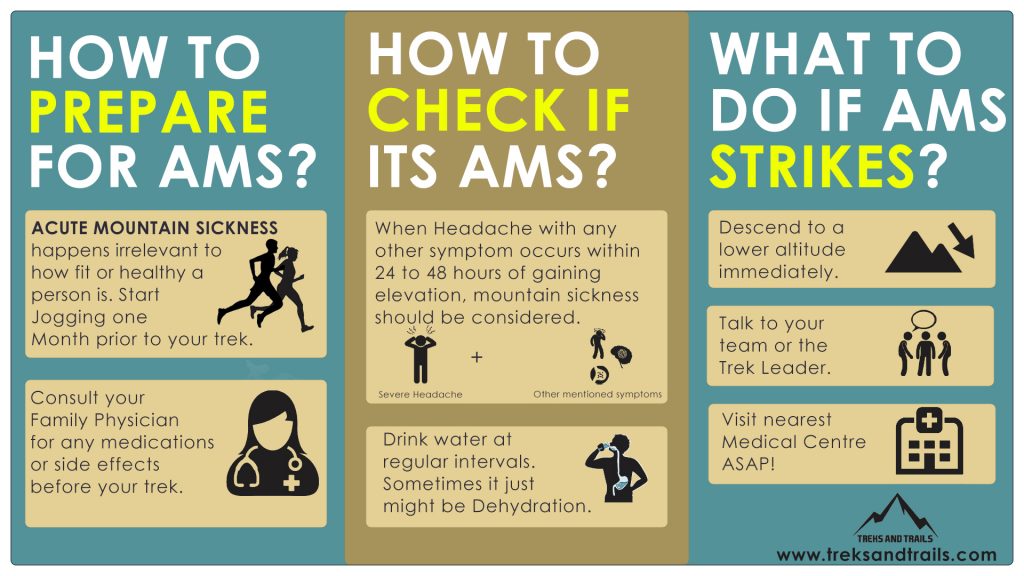
How to treat AMS, HAPE & HACE?
When it comes to high altitude sickness, you need to stop it at its initial stage. If not, then later, it gets more dangerous, and it could even turn fatal. One needs to stop it in its initial stages by recognizing the symptoms is critical. First thing you need to carry on high altitude is Lifesaver medicines
- Diamox tablets for better acclimatization
- Dexamethasone (Dex) a steroid which prevents your body from releasing substances that cause inflammation. This how it helps temporarily treat Edema.
- Nifedipine is a drug that lowers your blood pressure if you are suffering from HAPE.
How to treat AMS or Acute Mountain Sickness?
- Start the course of Diamox
- Take 250 mg of Diamox one tablet and drink 500ml of water rest for an hour.
- Move to the next campsite take rest immediately, but do not sleep. After 4 hours of the first tablet take another dose of Diamox 250mg. Keep yourself hydrated well after taking Diamox.
- Avoid exerting yourself.
- Don't go on sightseeing, walks.
- Continue your trek but be on Diamox course 250mg.
- Still, you don't feel right or uneasy you need to accept it that your body is not acclimatizing despite taking medication. One needs to start descending and got yourself to an altitude of around 8,000 feet.
- Once you start descending, you will start feeling better, but do not stop your descent. An abrupt stop can make your AMS come back.
How to treat HAPE?
- You need Diamox and Nifedipine
- Take 500mg of Diamox immediately even if you have taken Diamox a few hours earlier. We are talking about two tablets.
- Follow it up with 20mg of Nifedipine. In India, we get 10mg tablets of Nifedipine. So take your first 10mg wait for 20 min and then take the next 10 mg. This process will let the tablet settle in slowly. Within 30 minutes of the second 10mg, you should be able to breathe easier. Nifedipine eases out the pressure around your lungs, giving some space to breathe.
- After taking a combination of these two tablets starts descending, you should try to lose as much altitude as possible over the next three hours. Get yourself to a height of 8,000 feet, and you will feel better.
- Do not stop your descent. An abrupt stop can make your AMS come back.
How to treat HACE?
- Take 500 doses of Diamox and around 4 mg of Dex. This combination will stop your brain from swelling, giving you a window for a few hours to get yourself out of that altitude.
- Start your descent immediately, and try to get to an altitude of 8,000 feet as soon as possible.
- If you still cannot reach a lower altitude after six-hour repeat the same dose and continue your descent.
- Don't stop until you have reached around 8,000 feet.
- Once you have reached the altitude of 8,000 feet, lower your dosage of Dex to 2 mg followed by 1 mg every 6 hours.
- Dex medication needs to stop now gradually lower the dosage.
- Once you have completed the trek, please visit a nearby hospital for checkup and get yourself treated.
Precautions for AMS?
As you know, high altitude sickness can occur when your body not appropriately acclimatized to high altitude. So one should give enough time to acclimatize the body. So split your itinerary as much as possible and take it slowly according to the days, there is no need to club two days hike in one day. One must keep in mind acclimatizing is different for every individual.
You should increase your altitude just by 1000 feet in a day. Slow and Steady is the real way to acclimatize and get used to high altitude. The Himalayas mountain climb is quick. Sometimes there is a considerable altitude gap between camps, usually two and three thousand feet. Skipping days on your trek happens because at times there is no place to camp in between and no water source. For camping, you need flat ground and water source.
To prevent AMS trekkers and mountaineers from all around the world, use a medicine called Acetazolamide (Diamox) to acclimatize faster. This medicine helps to increase your breathing rate and helps you to allow passage of oxygen. Keeping in mind Diamox is a sulfa-based drug; if you are allergic to sulfides, one must avoid Diamox. There are few side effects of Diamox; you may feel a tingling sensation in your hands and feet. You pee more often, which means the medicine is doing its job. If you are taking intake of Diamox, one must drink a lot of water six to seven liters per day.
The best way to prevent AMS is to drink a lot of water on high altitude keep yourself hydrated. Don't sleep once you reach on the camp; try to keep yourself active. During your trek, keep your hands and ears open but to cover head. Eat proper meals, do not skip your meals, and have appropriate layers while sleeping at night. Precaution is must take into consideration; one must face further issues that are more dangerous dan AMS, HAPE & HACE.
Things to avoid during your high altitude trek
- Smoking can cause nicotine attack, and Please avoid smoking on your next trek.
- Drinking alcohol can dehydrate your body very quickly. You might think it keeps you warm, but you will suffer from dehydration.
- Avoid Skipping Meals.
- Go slow and avoid Overexertion.

